Introduction to Echeveria Pruning
Delve into the realm of Echeveria — a world where lush rosettes epitomize tranquility and sculptural beauty. Pruning, often overlooked, is essential in crafting your personal succulent oasis. Why trim these jewel-toned treasures? It’s not just about maintaining a compact, picturesque form; it’s about fostering their health and vibrancy.
Imagine your Echeveria as a living work of art; each snip is a thoughtful stroke of the brush, enhancing its aesthetic appeal. Regular pruning wards off the legginess that plagues succulents starved for sunlight. A well-manicured Echeveria evokes the densely-packed rosettes thriving in their natural, sun-drenched habitats.
But it’s more than mere allure. Picture this — a trim Echeveria, the foliage breathing freely, less susceptible to the pernicious grip of fungal woes. Air flows with ease around taut, tender leaves. Removing spent or damaged leaves closes the door on decay and disease, ushering in unrestrained growth and rejuvenation.
Gaze upon an echeveria in its prime — a sight to behold. The act of pruning isn’t simply a chore; it’s a nurturing ritual, a chance to connect with your succulent, to understand its whispers for care. The rewards? A robust, efflorescent specimen that elicits awe and captivation.
Embark on a visual journey with our chosen guide into the essence of echeveria maintenance. This video takes us through the necessary steps to ensure our succulent companions not only survive but flourish:
Now that you’re poised to prune, remember: each trim is a pivotal verse in the ballad of your Echeveria’s life. The plant you nurture today is the visual symphony of tomorrow. So, wield your shears with precision and grace, for in the world of succulents, the prudent pruner is truly the most astute of gardeners.
Recognizing the Right Time to Prune
Thumbs up for pruning echeveria—but when? Just like a seasoned gardener knows when to harvest their ripe tomatoes, understanding the perfect window to trim your echeveria can be the difference between a mediocre plant and one that’s the jewel of your succulent oasis. Let’s dial in on those indicators that shout ‘It’s time!’
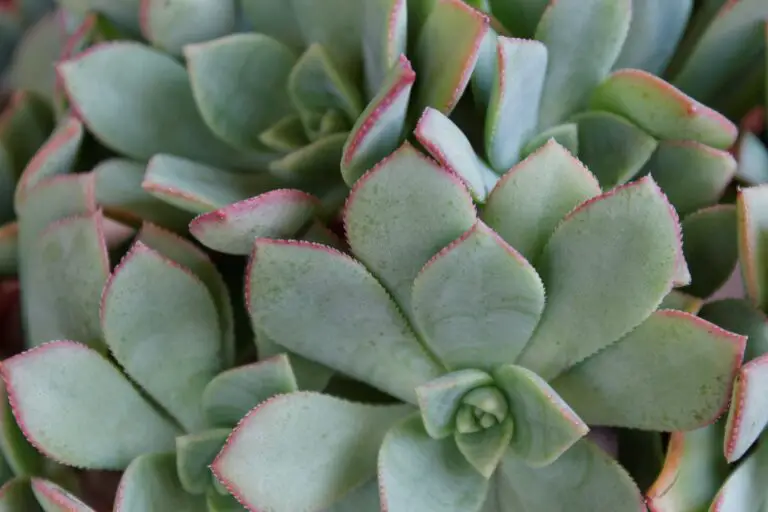
It all starts with a little observation. Keep an eye out for overgrown leaves that have seen better days or are starting to crowd their companions for sunlight. If you spot leaves that are brown or yellowing—a definite no-no if you’re aiming for a postcard-perfect plant—it’s a clear signal that your echeveria is ready for a trim. Here’s the twist: just as timing is vital in comedy, it’s critical in pruning echeveria. The end of the dormancy period, when your plant awakens in the spring with new growth energy, is like an alarm clock ringing for pruning time.
Why’s the timing such a big deal? Pruning earlier helps avoid stress on your echeveria when it’s conserving energy. Like avoiding a workout after a big meal, it’s all about working with your plant’s natural rhythms. Snip away at the right moment, and your echeveria will not only recover but thrive, redirecting energy to new growth that turns heads. If you’re eager to learn more about succulent care, timing your pruning is just one piece of the puzzle, but oh, what a difference it makes!
Tools of the Trade
Imagine you’re a skilled chef about to craft a culinary masterpiece—the same precision and care apply to pruning your echeveria. Pruning isn’t just about making cuts; it’s an art form that requires the right tools. Let’s slice into the must-haves for your succulent oasis!
First things first, a pair of sharp scissors or pruning shears is non-negotiable. It’s like having a sharp knife in the kitchen; clean cuts are essential. Why? Because jagged edges can become the ghastly gateways to infections. Not on our watch! We want to ensure each snip promotes healthy regrowth.
Now, let’s talk sterilization—your pruning tools must be as pristine as a surgeon’s scalpel. Imagine this: You’ve just trimmed your precious plant, only to introduce some nefarious bacteria into the fresh wound. Ouch! Avoid this horror show by swiping your blades with isopropyl alcohol before each use.
Reality check: Echeverias come in various sizes and their leaves can be as delicate as fine china. For those hard-to-reach spots or smaller echeveria varieties, precision tweezers or small forceps can be total game-changers—think of them as your botanical bobby pins, holding everything together while you work your magic.
Let’s not forget about protective gear. Succulent sap can be irritating to the skin for some, so donning a pair of gardening gloves isn’t just a fashion statement—it’s a layer of defense. And hey, they make gripping those slippery scissors all the easier, too.
Equipped with these essential tools, you’re ready to transform your echeveria into a sculpted beauty worthy of gallery display. It may seem like a meticulous process, and that’s because it is! Each tool plays a pivotal role in the health and shape of your succulent. So go ahead, wield those shears with confidence and turn pruning into your next green-thumbed triumph.
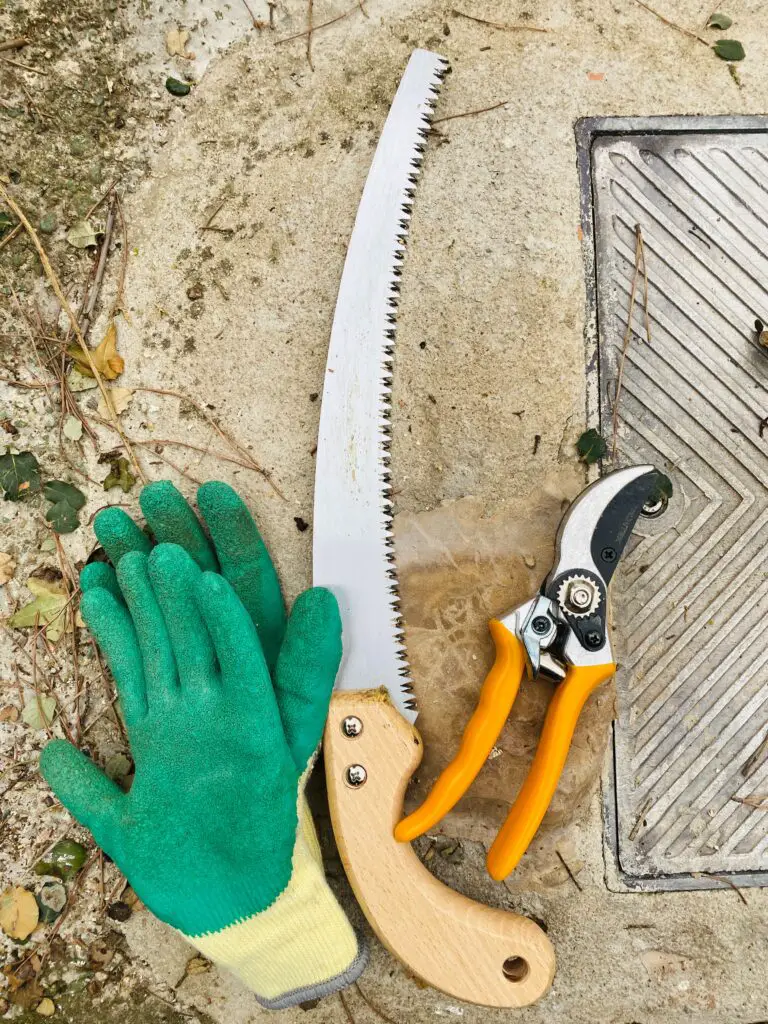
Step-by-Step Guide to Pruning Echeveria
Welcome to the flourishing world of Echeveria care, where the secret to vibrant succulent gardens is nestled in the art of pruning. Let’s dive into a hands-on journey, ensuring your Echeveria not only survives but thrives with luscious charm. Whether you’re a green-thumbed gardener or a budding enthusiast, these trimming tips will guide you to create a succulent oasis in your very own space.
Identifying Leaves for Removal
Begin your pruning adventure by carefully examining your Echeveria’s foliage. Look for leaves that are dry, wilted, or yellowing – these are the usual suspects earmarking retirement from the plant’s productive life. The removal of such leaves isn’t just a cosmetic upgrade; it redirects vital energy back to the flourishing parts of the plant. Imagine you’re a detective sifting through clues to find which leaves to tenderly bid adieu, to help the rest of the plant prosper.
Sharp and Sterile: The Pruner’s Creed
Before making any cuts, ensure your tools are as sharp as your detective wits and as clean as a whistle. Sterilize your pruning scissors or shears with rubbing alcohol to prevent the spread of disease. Pruning with dull tools can cause unnecessary bruising and damage – like trying to cut a tomato with a spoon, it’s just not going to give you that clean cut you’re aiming for.
Techniques for a Clean Cut
Now comes the moment of truth: making the cut. Position your shears at the base of the leaf and snip with confidence. Be as precise as a skilled surgeon, leaving no ragged edges – a clean cut heals faster and poses less risk for infection. If you’re reducing the height of your Echeveria or removing a spent flower stalk, treat it like a sculptor chiseling away to reveal a masterpiece hidden within the marble block of overgrowth.
Aftercare: Ensuring a Speedy Recovery
Pruning can be somewhat of a shocking experience for your plant. Reassure your Echeveria by providing it with some TLC in the form of proper sunlight, a light watering, and a thank-you note (just kidding on the note). The goal is to help it recover swiftly and return to its former splendor.
Remember, every snip and trim you make is guiding your Echeveria towards its ideal shape and size. With this step-by-step guide, you’re not just pruning; you’re curating the beauty it’s destined to display. For those who are visual learners, the video above offers a fantastic real-life example of how to prune a succulent, ensuring your journey in Echeveria care is not just fruitful, but joyful as well.
Handling Overgrown Echeveria
Have you ever found your vibrant echeveria stretching out of its cozy pot, resembling more of a wild octopus than a structured succulent? It’s a common sight for many plant enthusiasts, and while echeveria can thrive with minimal care, sometimes they get a little too comfortable and enter their ‘teenage growth spurt’. Let’s get our hands dirty with some savvy strategies for taming that overgrown echeveria and restoring its original charm!
Firstly, cast your eyes on the growth pattern. Has your plant taken a liking to the sun a bit too much, resulting in a selfie stick-like stem? That’s etiolation – a fancy term for plants stretching out towards the light. Grab your gardening shears because it’s time for an echeveria intervention! Pruning isn’t just about keeping your plants in line; it is an art of balance, ensuring each snip promotes healthier, denser growth.
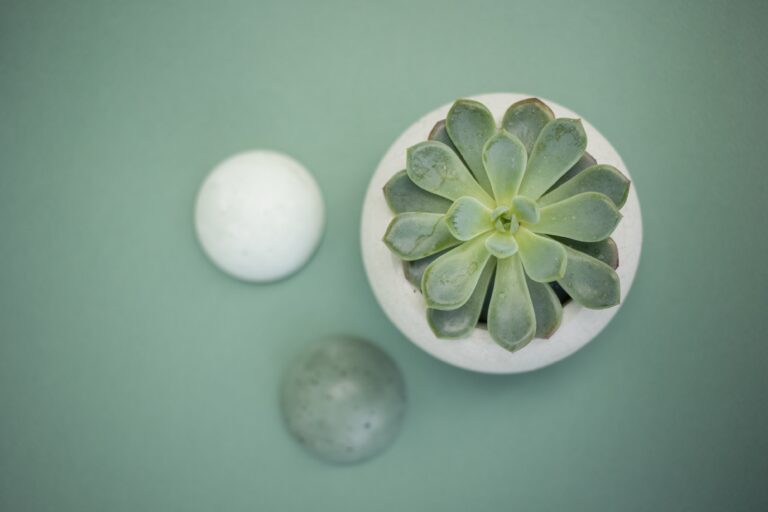
Picture this: you’re sculpting a masterpiece, removing the overreaching limbs and allowing the robust base to shine. You’ll want to cut back any leggy growth right above a leaf node. This strategic snipping encourages the echeveria to redirect its energy, motivating it to push out fresh, compact foliage. The result? A succulent that’s more bonsai, less beanstalk. Remember, no touching of roots or the core rosette – we are stylists, not surgeons.
Rejuvenating Leggy Echeveria Plants
It’s not just about cutting back; it’s about giving your echeveria a new lease on life. When those leggy stems are removed, think of them as a bouquet of opportunities. Propagating these cuttings is like hitting the jackpot in the plant lottery. Gently place them in a soil mix meant for succulents, and you’ll have baby echeverias sprouting up in no time! Not only are you refining one plant, but you’re also multiplying your succulent collection – talk about a win-win!
For those with a creative streak, envision the overgrown echeveria as your canvas. Post-pruning, the plant’s form is more defined, giving it a fresh aesthetic that complements the room it graces. An overgrown echeveria is not a setback; it’s a testament to your plant-parent accomplishments and a chance to showcase your horticultural flair.
The takeaway here is simple: don’t let your echeveria grow wild and lose its luscious form. With a bit of strategic pruning, you can turn that tangled mess into a succulent oasis that’s as structured as it is stunning. Now roll up those sleeves – it’s pruning time!
Echeveria Post-Pruning Care
Imagine your echeveria as a phoenix; fresh from a pruning session, it’s ready to rise, rejuvenated with lush, vibrant growth. This isn’t a myth! To help your succulent friend regain its splendor, post-pruning care is crucial. Let’s dive into a green thumb’s guide to nurturing your echeveria into a succulent oasis.
Nurturing the Wounds
Your freshly pruned echeveria might look a bit bare and vulnerable, but worry not. The key is to ensure that the cuts heal properly. In the natural sunlight of your windowsill or under the gentle warmth of grow lights, your plant will form callouses. Just like a scraped knee, these callouses prevent infections and pave the way for new growth. Avoid watering immediately after pruning to give the wounds time to dry, much like you would protect a bandaged finger from water to keep the bandage effective.
The Right Drink at the Right Time
Timing is everything when it comes to watering your echeveria post-trim. Once the cuts have healed, it’s time for a celebration drink – but only a modest one! Overwatering can lead to root rot, especially when your plant’s defenses are down. Think of it as giving your echeveria a refreshing sip, not a full gulp, to quench its thirst without overwhelming it.
Feeding for Future Flourishes
With all the hard work your echeveria has done to grow back, it’s going to be hungry! Once new growth appears, step in with a balanced, succulent-appropriate fertilizer. This little boost of nutrients is like a care package for your plant, supporting stronger and healthier growth. It’s the plant equivalent of a well-balanced diet, ensuring your echeveria has all it needs to thrive.
For a visual guide to echeveria care after pruning, check out this informative video:
Remember, patience is a garden virtue. Echeverias are not sprinters; they’re marathon runners when it comes to growth. So take it slow, enjoy the journey, and celebrate each tiny triumph of green that unfolds. Keep a keen eye out for these victories, and soon enough, you’ll be the proud caretaker of a flourishing echeveria paradise.
Common Mistakes to Avoid While Pruning
Pruning your echeveria can be a relaxing and rewarding experience, but a few missteps and you might end up with a less-than-lusty succulent. Let’s navigate the choppy waters of echeveria maintenance together, so you don’t end up making a cut you’ll regret. First things first—let’s talk about the age-old blunder of overzealous snipping. You know, that moment when your inner Edward Scissorhands awakens, and before you know it, your echeveria is trimmed down to its bare bones. Avoid this by reminding yourself: less is often more. Aim to preserve the natural shape of your plump green amigo!
Here’s another pitfall: not using the right tools. Bringing a butter knife to this pruning party? Your echeveria deserves better. Make sure your tools are sharp and clean to ensure clean cuts that heal quickly, reducing the risk of infection. In the real world, this means disinfecting your pruning shears before use—your echeveria will thank you with bountiful growth.
Timing is everything, and it’s no different when it comes to trimming these succulents. Snipping during a growth phase is ideal; it’s like giving your plant an encouraging pat on the back. But doing the deed during dormancy? That’s like waking up a bear during hibernation—unsettling and unnecessary. Monitor your echeveria’s growth cycle and plan your pruning party accordingly.
Finally, let’s not forget the infamous ‘hydrated plant snafu’. Picture this: you water your echeveria, and moments later, you’re going in with the shears. Bad move. Wet cuts are open invitations for bacteria and fungi, and you might unintentionally end up hosting a microscopic fiesta. Keep it safe—prune when the plant and soil are dry.
Pruning can be simple if you stay sharp, sterilized, and seasonally savvy. Keep these tips in mind and watch as your echeveria becomes the life of your garden party!
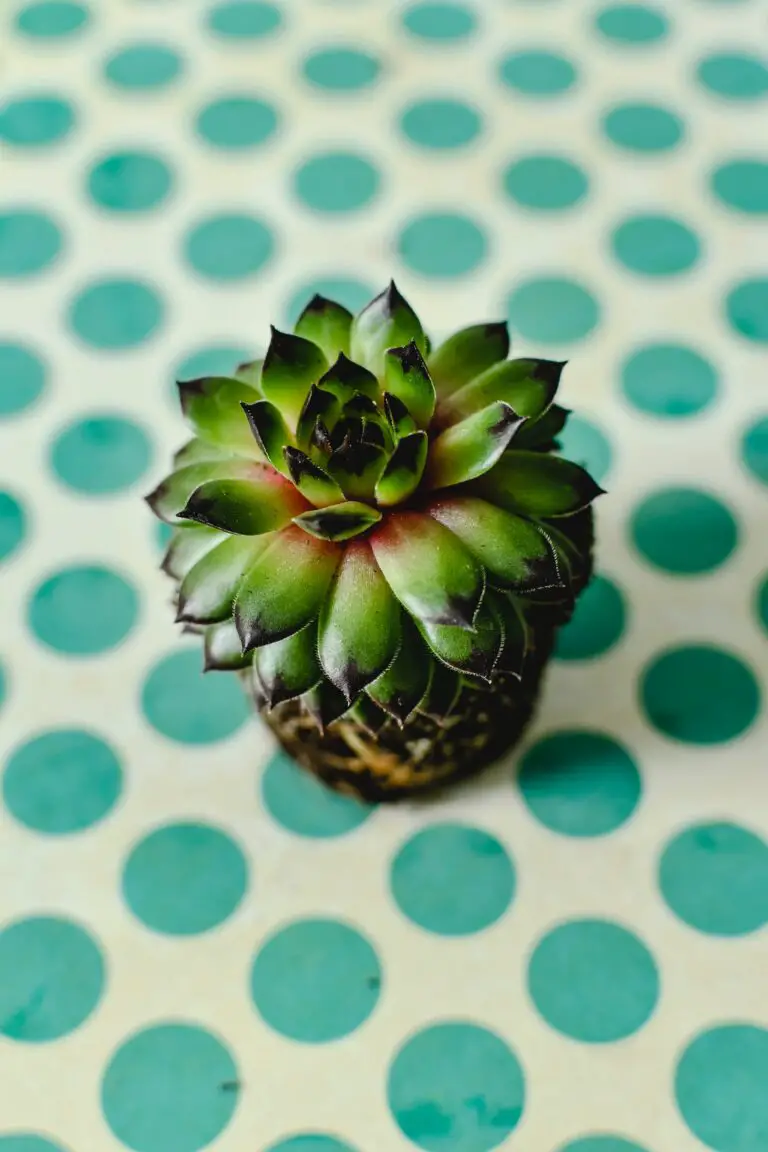
Propagating From Pruned Material
Have you ever gazed at your echeveria and wondered, “Could there be even more of this stunning succulent?” Good news: the beauty doesn’t have to be limited to what you see today! Let’s dive into the exciting world of propagating echeveria from clippings, a rewarding way to multiply your green oasis. It’s simpler than you might think, and the results will leave your friends green with envy.
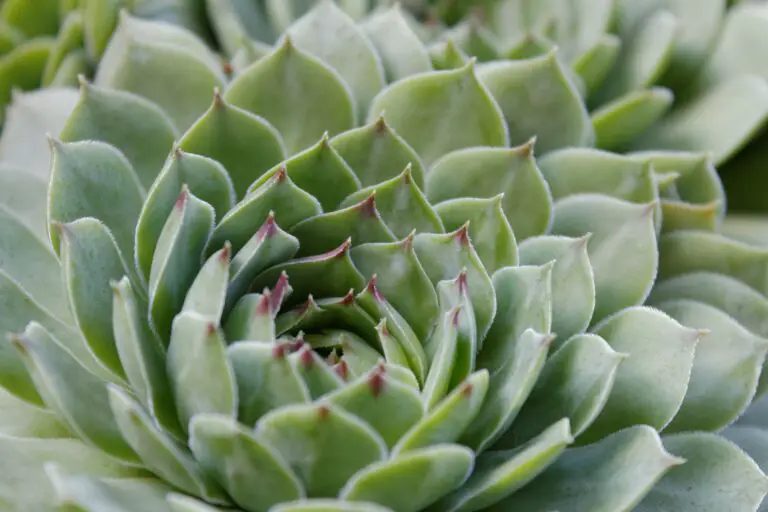
Imagine you’re the director of a botanical blockbuster and your echeveria is the star of the show. As you trim its overgrown parts, you’re not just grooming—you’re actually creating a cast of future stars! Each leaf or stem you snip has the potential to grow into a whole new plant. Think of it like a plant’s version of cloning, where each cutting can become a carbon copy of its parent!
Here’s the secret: timing and technique are pivotal. Choose a healthy, plump leaf or a stem with several leaves and gently twist it away from the parent plant. The goal is a clean break, so be careful not to damage the base. It’s a bit like twisting an Oreo apart; the goal is to keep all the good stuff on one side!
Next up, let the cutting dry. It’s a patience game as your future plant’s wound needs to callous over, like leaving a painting to dry, before dipping it into soil. This usually takes a few days to a week depending on your climate (it’s thirsty work for the cuttings, after all).
Once the surface is dry, it’s time for the cutting to hit the soil, but not any old dirt will do. Use well-draining succulent mix and gently poke your cutting into it. Water sparingly; give it just enough to quench its thirst without drowning it. It’s a delicate balance, akin to cooking the perfect medium-rare steak.
With just a bit of patience and daily checks, soon you’ll witness the magic of new growth. Those tiny roots reaching out are like the roots of a new tree, anchoring your baby echeveria in its new home. Before you know it, your trimmed clippings will have transformed into full-fledged plants, ready to beautify your windowsill or make a perfect gift for a fellow plant lover.
Seasonal Pruning Considerations
Just like your wardrobe changes with the seasons, your echeveria’s pruning needs transform throughout the year. Spring invites a burst of growth, summer basks in sun-loving splendor, autumn whispers for preparation, and winter demands a gentle dormancy. Let’s peel back the layers of seasonal care for your leafy friend, ensuring it thrives and captivates year-round.
Spring Into Action: The Awakening
When spring unfurls its green fingers, your echeveria shakes off the chill and stretches towards the light. This is a prime time for pruning, as plants kick into high gear and repair any winter damage. Snip away any leggy growth, encouraging a fuller, more vibrant appearance. Picture a sleepy bear awakening from hibernation, eager to forage and grow; that’s your echeveria, hungry for a fresh start and a tidy silhouette.
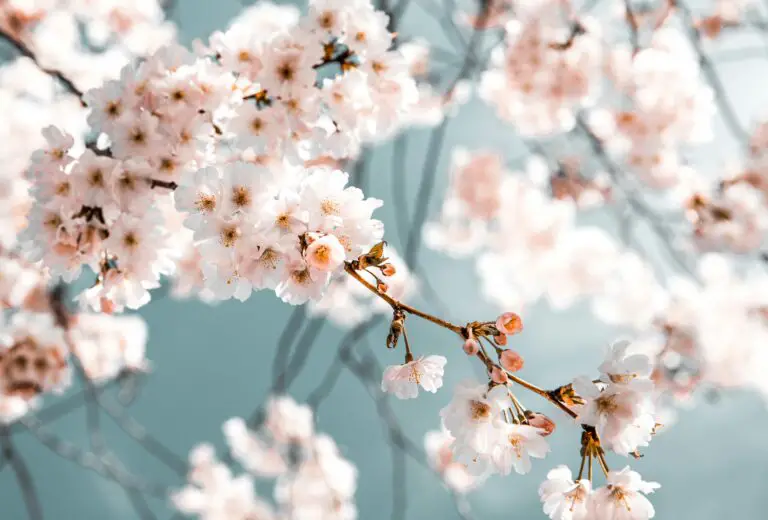
Summer Pruning: A Delicate Dance
As the mercury rises, echeveria’s growth can become a little less vigorous. It’s the season of maintenance pruning, a delicate dance of removing spent blooms and dead leaves. Think of it as your plant’s summer trim, akin to a refreshing haircut that keeps you cool and collected. It’s not about heavy-handed cuts but rather a finesse that encourages airflow and celebrates those sun-drenched rosettes.
Autumn Alerts: Preparing for Rest
When the air turns crisp and the leaves start to tumble, it’s a signal to prep your echeveria for the cooler months. Pruning in autumn is like helping your plant tuck in for a long nap. It’s about removing any parts that won’t survive the winter, minimizing energy waste on dying foliage. Less like a full makeover, this is your plant’s seasonal declutter, an act of kindness to ensure it wakes up to spring unburdened and refreshed.
Winter Wisdom: The Minimalist Approach
In the heart of winter, echeveria enters a phase of rest, where pruning should be minimal, if at all. It’s a period of observation and slight intervention, trimming only what’s necessary to prevent rot or disease. Imagine your plant as a hibernating creature in its cozy den, any disturbance kept to the bare essentials. The focus here is on preserving health, not promoting growth, respecting the natural cycle of energy conservation.
With a watchful eye and an understanding of the seasons, your echeveria can be pruned to perfection, ensuring it remains a striking piece of your succulent oasis. Like a conductor leading an orchestra through the symphony of the seasons, you can guide your echeveria’s growth and shape it into the masterpiece nature intended.
Frequently Asked Questions
Embarking on a echeveria pruning journey feels like you’re a botanic stylist – you’re sprucing up your green buddies, so they’re the talk of the plant world. So, let’s dive into the thick of it and tackle some of those burning questions you might have. Ready for a trim?
When is the best time to prune echeveria?
Timing is everything, especially in the life of a succulent. The ideal pruning season is early spring, right before the growth spurt hits. Think of it like prepping your plants for a sprint – they’ll grow back healthier and more vigorous. Just like a runner stretches before a race, pruning sets your echeverias up for success.
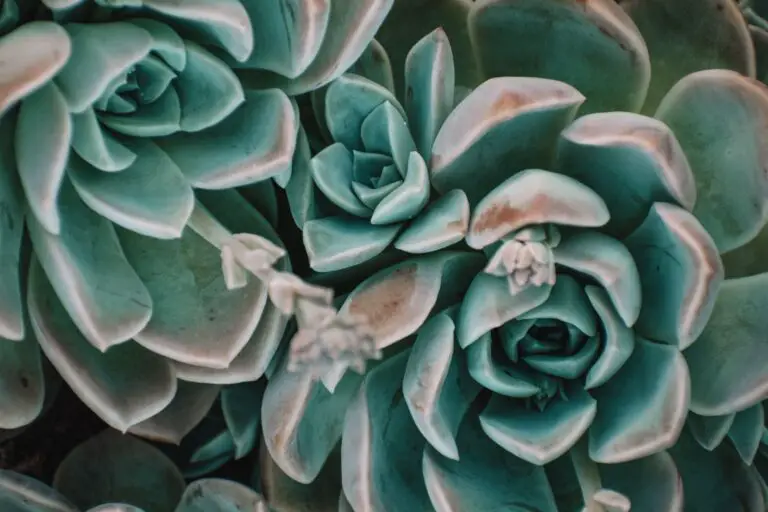
How often should I prune my echeveria?
Not too often! Frequency can depend on your echeveria’s performance. If it’s putting on a lush display, an annual spa day should suffice. Picture this: it’s like getting an annual haircut to maintain your style but avoid going overboard. After all, even plants value a good hair day.
What tools do I need for pruning echeveria?
Think of pruning tools as your gardening allies – sharp, clean, and precise. A pair of sterilized scissors or a small knife will do the trick. Imagine them as the fine brushes of an artist, detailing the canvas of your garden. Always clean them meticulously post-trim to prevent any unwelcome guests, like plant diseases.
Can pruning my echeveria encourage more blooms?
Absolutely! Pruning is like giving your echeveria an encouraging pep talk. It helps in redirecting energy to produce more flowers rather than wasting resources on old or damaged leaves. It’s like rerouting traffic in a busy city – ensuring everything flows towards the blooming boulevards.
Is it possible to over-prune my echeveria?
Yes, and it’s a common rookie mistake. Remember, echeverias are not Chia Pets that grow back with a vengeance. Prune with caution; imagine you’re sculpting a masterpiece, not chopping firewood. An over-zealous snip can mean bidding adieu to potential blooms, so keep it moderate, folks.



